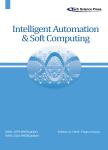版权所有:内蒙古大学图书馆 技术提供:维普资讯• 智图
内蒙古自治区呼和浩特市赛罕区大学西街235号 邮编: 010021

作者机构:Robotics Laboratory Department of Mechanical Engineering ARC (Automation Research Center) Pohang University of Science and Technology Pohang 790-784 South Korea
出 版 物:《Intelligent Automation and Soft Computing》 (Intell. Autom. Soft Comp.)
年 卷 期:1996年第2卷第3期
页 面:285-300页
学科分类:08[工学] 0835[工学-软件工程] 0701[理学-数学] 0811[工学-控制科学与工程] 0812[工学-计算机科学与技术(可授工学、理学学位)]
主 题:Compliance paradigm Compliance-governed manipulator Kinematically redundant manipulator Quasi-statically equilibrating motion Stiffness behavior
摘 要:A compliance-governed (redundant) manipulator is the main subject of the article, and its global quasi-static behaviors are studied. To implement those behaviors in an actual manipulator, mathematical compliance paradigms in three forms are proposed. They are: kinematic (or equilibrating motion) level, quasi-static (or transient motion) level, and stiffness level compliance paradigm. Each has its own usefulness and implication as described in this article. Repeatable kinematic behavior of a compliance-governed manipulator can be implanted into the inverse kinematic algorithm for redundant manipulator either by the kinematic level or quasi-static level compliance paradigm. If the transient behavior with stiffness characteristic is required in a non-compliance-governed manipulator, we will use the stiffness level compliance paradigm. It makes the arm respond equivalently to the intended compliance-governed manipulator. © 1996 Taylor & Francis Group, LLC.